► We speak to Alois Ruf Snr
► Inside Ruf
► We prepare to drive the new CTR
Of the million or so times Faszination on the Nürburgring has been watched online, a ridiculously large proportion are down to my addiction to one of the automotive world’s first viral videos. It shows Ruf test driver Stefan Roser wrestling the original Ruf CTR Yellowbird around the Nürburgring in 1989. With its steering wheel never pointing straight for more than a second, Roser slid, snaked and smoked the 3.4-litre twin-turbo 469bhp CTR around the Nordschleife in a record 8min 5sec, and into legend. Scroll to the very bottom of this article to watch it.
His roadcraft was flawless. No helmet, no gloves, no five-point harness, no electronic safety net. Just superhuman car control, big balls and the ability to unblinkingly look fear in the eye and tell it to shut the front door. All wrapped up in period-perfect T-shirt, stonewashed jeans, fluffy white socks and a pair of leather slip-ons that never stopped dancing across the pedals.
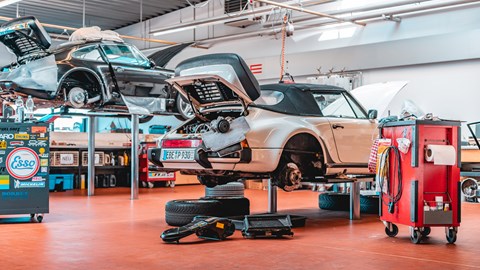
The video was the culmination of an extraordinary epoch for Ruf that started when the CTR – that’s Group C Turbo Ruf – upset the likes of Lamborghini, Porsche, Ferrari and AMG by blitzing them all to take the title of the world’s fastest car, on a wet and cold day in March 1987 at Volkswagen’s Ehra-Lessien test ground.
Piloted by Phil Hill and Paul Frere, the yellow Ruf racked up 211.14mph, its searing speed and dazzling paintjob gifting it the Yellowbird nickname. A year later the Ruf returned, rolled up its sleeves and hit 213mph. And now, lest we start to think of Ruf in purely nostalgic terms, there’s a new CTR Yellowbird.
Into the factory
Alois Ruf – it’s pronounced ‘roof’, not ‘rough’ – is stuck in a meeting, so while we wait the company’s head of sales and marketing, Marc-André Pfeifer, takes me on a tour. We start outside, standing in the kiln-hot Bavarian sunshine, looking up at the imposing house where Alois Ruf’s parents lived.
Using the workshops neighbouring the house, Alois Ruf Snr founded Auto Ruf in 1939. Post-war, his automotive service and repair business was brisk and, as well as taking on the adjacent fuel station, Ruf Snr built buses. In 1963, infected by his father’s passion for all things automotive, Ruf Jnr took on their first Porsche project – fettling a 356 – and has never looked back.
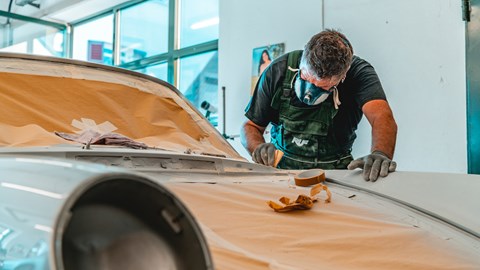
‘And, 55 years later, we are still a family-owned and family-run business, still producing bespoke Porsche-based cars,’ says Pfeifer, himself in his ninth year at Ruf. ‘Produce’ is the key word here, because just like BMW specialist Alpina, Ruf is recognised under German law as a manufacturer, not just a very good tuner.
The quality and quantity of that bespoke production becomes apparent when we reach the immaculate workshop and production areas. There are neither CNC machines nor multi-limbed robots here. Instead, there are high-mileage lathes, all manner of metal shearers, panel-beating mallets and personalised trolleys carrying an eclectic array of tools, all worn shiny and smooth with use.
Two rather weary weeping fig trees look out over the modest but pristine garage, no bigger than the size of two tennis courts. Leo Sayer is playing on the stereo. I can see only one computer, its screen displaying a horribly complicated work schedule. Sixteen men work with quiet intensity on the score of cars before them. The air is thick with the aroma of hot metal, oil and alchemy.
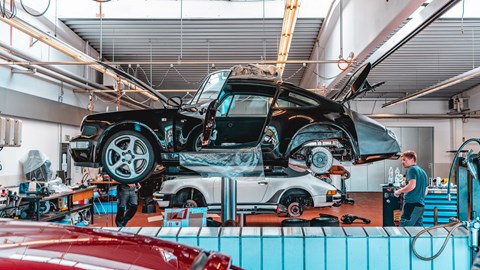
Experience and craftsmanship
Experience is the loom that allows Ruf to weave its magic, says Pfeifer. ‘Accruing the knowledge and the understanding and then passing it on to a new generation is vital, because if we do it, we do it absolutely correctly, from A to Z. If there is no stock then we rebuild every part we need. We produce our own wiring loom, for example, because we want to ensure that all the electronics work the way we want them to.
‘We don’t have specialists in the sense that we don’t have one guy who just does engines, and one guy who just does transmissions – at Ruf, you have to know everything, so that you understand the implications of your work on those working around you. So, working on a 356 engine will help you better understand a 996 Mezger engine.’
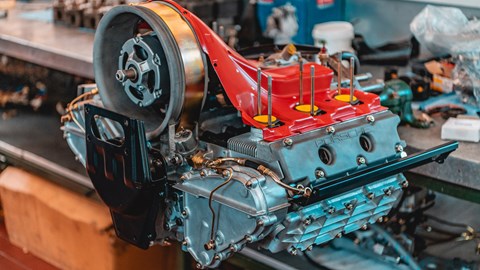
The average restoration takes around 12 months, and costs €250,000-€300,000. ‘Costly, yes, but to restore correctly, you have to fix the previous fixes, if you know what I mean,’ says Pfeifer. ‘Restoration currently accounts for 50 to 60 per cent of our work, with servicing, manufacturing, tuning and customer research – sourcing cars and components, checking history, legacy and provenance for our clients – accounting for the rest,’ he adds.
New production models
‘We are now restoring cars that we sold new. However, manufacturing – spearheaded by the CTR and SCR – will now become the main focus of the business alongside Ruf’s restoration work.’ The SCR?
That’s the upcoming naturally- aspirated Ruf that, unlike the limited-run CTR, will be a regular production model. We move into the rooms visitors rarely see, to the engine dynamometers. The first engine dyno – a 1973 Schenck – has pedigree. It initially belonged to BMW’s Formula 1 engine arm and was used by Paul Rosche and his team during the development of the M12/13 engine that powered the Gordon Murray-designed Brabhams of Piquet and Patrese.

However, its 555lb ft maximum torque reading was too low for BMW’s fearsome 1.5-litre four-cylinder turbocharged unit, and it was sold to Ruf. It looks aptly analogue with its big white clockface dial and Medusa’s head of hydraulic pipes, but every engine that Ruf works on is put through its paces on either this or the more modern dyno in the adjoining room.
At the end of the day, over a fine dinner of grilled saganaki and dorado washed down with the truly excellent local Storchen Bräu beer, and a few slugs of ouzo for good measure, Alois, his Venezuelan wife Estonia, photographer Alex Tapley and I discuss Ruf’s past and future. I ask if they ever had doubts about the new path they were forging, the investment, the new cars? ‘Once, yes,’ admits Alois. He turns to his wife. ‘Geneva, remember?’
Estonia takes up the story. Flamboyant and engaging, she’s every bit as passionate about Ruf as her husband. ‘It was very early on the first morning of press day at the Geneva show last year when we showed the CTR for the first time. We suddenly thought, “What if no one likes it, what if no one understands what we’re trying to do?” We were both suddenly very worried. There was a lot of personal pride and money at stake.]
‘I said to Alois that it didn’t matter if no one wanted the CTR. We did – we believed in it and we’d simply keep it and drive it for the rest of our lives. But then, we needn’t have worried.’ All the cars were sold within a fortnight of the car making its debut.
With a staff of 65, Ruf annually puts the keys to around 30 of the world’s most exciting, exclusive and ferociously quick cars into the hands of their evangelical owners. In a data-driven automotive world on the brink of electric-powered autonomous mobility, Ruf is an anachronism.
As a family-owned and family-run car company it’s a throwback to a simpler age when driving was a rewarding challenge experienced in cars that were stripped bare to expose both your skills and weaknesses.
Ruf is a thriving survivor of bygone good times – a bunch of speed freaks and power junkies, hand-building automotive hand grenades. Long may Alois and Estonia Ruf continue to build their bespoke cars no one needs but everyone wants.
The rough guide to Ruf
You need some serious wedge to put a Ruf in your garage. The current 700bhp CTR Yellowbird was priced at €750,000 plus taxes but all 29 have already been sold. But there are plenty of new and used alternatives available via importers Ruf Automobile (rufautomobile.co.uk).
CTR3 Clubsport
2012-on
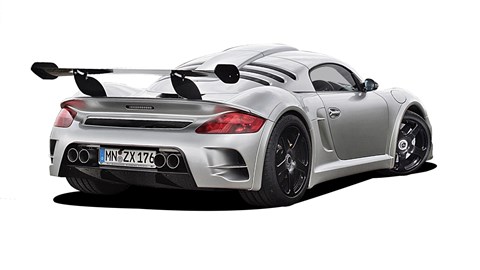
Mutated Cayman styling with modded 911 Turbo power, the track-oriented 777bhp Clubsport could show a Ferrari 488 Pista the way home.
RCT Evo
1994-on
The air-cooled, single-turbo RCT Evo (€300k) gets a 6-spd manual gearbox and 420bhp. Big dials and button-free wheel inside.
CR
2018-on
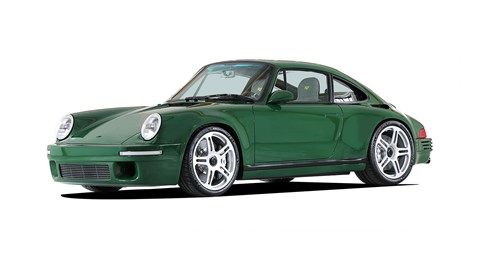
Upcoming SCR puts a 503bhp 4.0-litre Ruf-designed naturally-aspirated engine in the CTR’s carbon chassis. Yours for €650k.
Turbo Florio
2015-on

The 636bhp targa-top Turbo Florio (€400k) is available with rear- or all-wheel drive and a 6-spd manual or 7-spd dual-clutch auto.
TurboR Limited
2016-2018
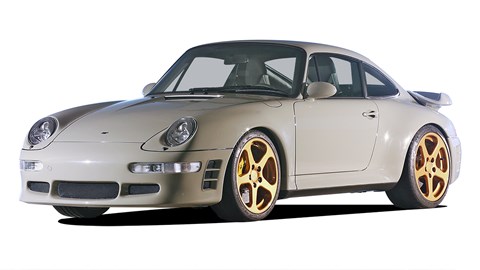
Air cooling meets twin turbos in a modern recreation of 1998’s TurboR: 612bhp and a 212mph top speed, priced at €700k.